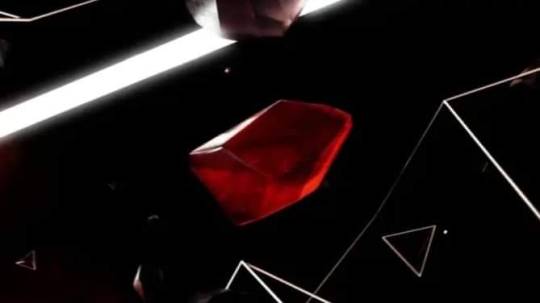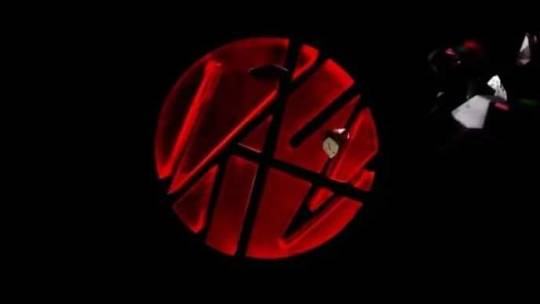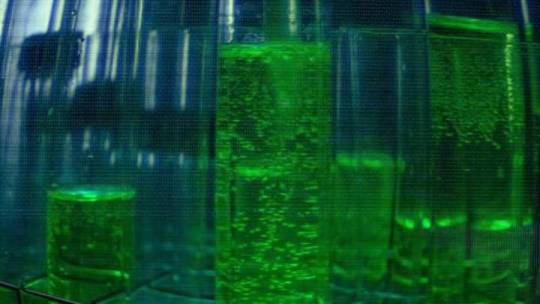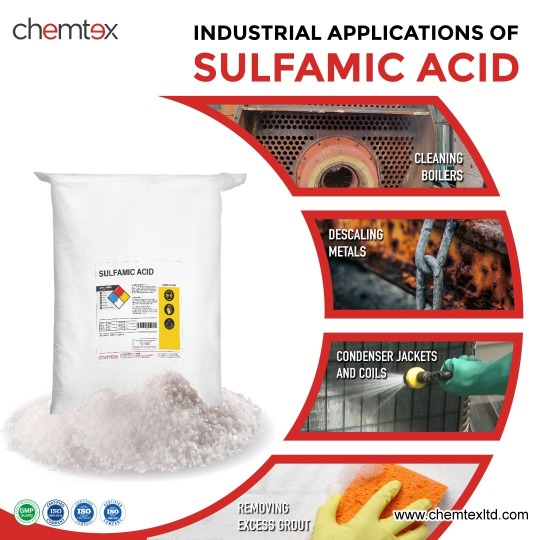#fuming sulphuric acid
Explore tagged Tumblr posts
Text
Why Fuming Sulphuric Acid is Important in Industry
Fuming Sulphuric Acid is a powerful chemical used in many industries. It is also called oleum and is a mixture of sulfuric acid and sulfur trioxide. This chemical is known for its strong and smoky nature. Many industries depend on Fuming Sulphuric Acid because it has special properties that make it very useful.
What is Fuming Sulphuric Acid?

Safety Measures
Fuming Sulphuric Acid is very strong and can be harmful. It can cause severe burns and other injuries if it comes into contact with skin or eyes. It is also harmful if inhaled. Therefore, it is important to follow safety measures when handling this chemical:
Always wear protective gear, such as gloves and goggles.
Work in a well-ventilated area to avoid inhaling fumes.
Store Fuming Sulphuric Acid in a safe and secure place, away from other chemicals.
In case of contact, wash the affected area with plenty of water and seek medical help immediately.
Uses of Fuming Sulphuric Acid in Industry
Manufacturing Chemicals: Fuming Sulphuric Acid is used to make other chemicals. It is a key ingredient in making dyes, explosives, and drugs.
Metal Processing: It helps clean and process metals. It removes rust and other impurities from metals, making them ready for further use.
Petroleum Industry: It helps in refining oil. Fuming Sulphuric Acid is used to remove impurities from crude oil, making it pure and usable.
Detergents and Soaps: It is used to make detergents and soaps. Fuming Sulphuric Acid helps in creating the cleaning agents found in these products.
Textile Industry: It helps in the production of synthetic fibers. These fibers are used to make clothes and other textile products.
Why Choose Maruti Fine Chemicals?
Maruti Fine Chemicals is a trusted name in the chemical industry. We provide high-quality Fuming Sulphuric Acid and other chemicals. Our products are safe, reliable, and meet industry standards. If you need to buy sulphuric acid or Hydrochoric Acid, we are the right choice. We ensure that our chemicals are of the best quality and are delivered safely to our customers.
FAQs
Q1: What is Fuming Sulphuric Acid?
A1: Fuming Sulphuric Acid is a type of sulfuric acid that contains extra sulfur trioxide. It is very reactive and used in many industries.
Q2: How is Fuming Sulphuric Acid different from regular sulfuric acid?
A2: Fuming Sulphuric Acid contains more sulfur trioxide than regular sulfuric acid, making it more reactive and stronger.
Q3: What industries use Fuming Sulphuric Acid?
A3: Many industries use Fuming Sulphuric Acid, including chemical manufacturing, metal processing, petroleum refining, detergents and soaps, and textiles.
Q4: Is Fuming Sulphuric Acid dangerous?
A4: Yes, Fuming Sulphuric Acid is very strong and can cause severe burns and injuries. It is important to handle it with care and follow safety measures.
Q5: Where can I buy sulphuric acid?
A5: You can buy sulphuric acid from Maruti Fine Chemicals. We provide high-quality Fuming Sulphuric Acid and other chemicals.
Q6: What should I do if Fuming Sulphuric Acid comes into contact with my skin?
A6: If Fuming Sulphuric Acid comes into contact with your skin, wash the affected area with plenty of water immediately and seek medical help.
Q7: Can Fuming Sulphuric Acid be used in the textile industry?
A7: Yes, Fuming Sulphuric Acid is used in the textile industry to produce synthetic fibers.
Q8: Why is Maruti Fine Chemicals the best choice for buying chemicals?

Conclusion:
Fuming Sulphuric Acid is an important chemical in many industries. Its strong and reactive nature makes it very useful in manufacturing chemicals, processing metals, refining petroleum, and more. However, it is important to handle it with care and follow safety measures to avoid any harm. If you need to buy sulphuric acid or Hydrochoric Acid, Maruti Fine Chemicals is the best choice for high-quality and reliable products. We are committed to providing the best chemicals to our customers and ensuring their safety.
0 notes
Text



Health
Exhaust fumes (carbon dioxide, sulphur dioxide, nitrogen dioxide, carbon monoxide, hydrocarbons) are a major contributor to global warming and acid rain, and cause much ill health and environmental damage. The average car pollutes more than two billion cubic metres of air in its life. In Britain emissions from car exhausts have increased by 73% since 1981; a 1993 government study found 19 million people in Britain were exposed to pollution exceeding EU guidelines. In 1965 there were 8 million cars in Britain; by 2025 36 million are predicted. Children and the elderly are particularly at risk from exhaust pollution, which causes asthma and bronchitis. Greenpeace International calculates 7.5 million elderly people are at risk and 9 million children. Asthma is one of the few treatable chronic diseases increasing in Western countries. Children are more vulnerable because they exercise more and so breathe in more air; 1.6m people die of air pollution each year, many children. The number of young children admitted to hospital with severe asthma attacks has increased 13 times since 1960. It is the greatest single cause of hospital admissions after heart disease and stroke.
#health#public health#anarcho-communism#anarcho-primitivism#anti-capitalism#capitalism#class#class struggle#climate crisis#colonialism#deep ecology#ecology#global warming#green#Green anarchism#imperialism#industrialization#industrial revolution#industrial society#industry#mutual aid#overpopulation#poverty#social ecology#anarchism#anarchy#anarchist society#practical anarchy#practical anarchism#resistance
6 notes
·
View notes
Note
had a chem class in the lab today, it was fun but a metal stirrer thing was left in a beaker of barium chloride and they started reacting and it released some fumes that have definitely fried one or two braincells of mine and are definitely the reason I have a headache right now.
Also someone wanted to put a cube of SODIUM into *SULPHURIC ACID*
Oh that's not good 😟
2 notes
·
View notes
Text
i shouldnt be allowed in chem labs i think .guess who inhaled a bunch of fumes because we were making esters and i thought that would be a good way to tell if id poured any out with the other solvents by accident (the other solvents were concentrated sulphuric acid and ethanoic acid)(Smelt Bad)(Head Went Weird)
3 notes
·
View notes
Text
Calcium sulphur batteries (uwu)
Okay, so, i've become interested in z-pinch studies for aerospace purposes (i'm really excited about the prospects, everything works on paper, but i naturally want to actually witness p+N14 fusion for above 0.01% of available protons before i go trying to get the materials to build a real liquid fueled SSTO fusion rocket, especially since there are thousands of folks way smarter than me who have presumably thought of this before and we don't have it yet, so yeah). Anyways, if i want the extremely large electricity input without making my electricity bill higher than a whole month's rent and getting my roommates mad at me, i'll need to collect solar or wind in a battery bank. Since lithium batteries are just about all immoral and expensive (yes i am writing this on a device powered by lithium batteries, it would be lovely if capitalists would take a hint and switch to things that just objectively perform better and are cheaper, but whatever), i figured this would be a nice excuse to experiment around with some new battery designs. Since all of them will require sulphur, i won't be able to really get into it before mid may due to some concerns about the smell and risks of getting sulphur powder everywhere (it's very yellow and hard to clean out), but i felt i might as well share my preliminary ideas. First off, in order to make the organic sulphur polymer, i'm looking to explore mostly citrate based polymers, perhaps with phenylalanine mixed in in order to both give more bulk as well as providing nitrogens for sulphenamides to form. Since i'll need urea later, i was also considering partially polymerizing urea with citric acid and adding that into the molten sulphur mix, but i'm less confident in the stability of that and a bit concerned about the potential noxious fumes produced. Regardless, that's the short of the sulphur cathode, details will definitely change after i refind that paper which went over a great way of preventing insoluble polysulphide production. I'm also gonna experiment with anode material and even the ions i use. I know i said "calcium sulphur batteries" in the title, but due to how common aluminium is and how much easier magnesium is to work with (and the fact that their specific energies are higher), i'll also be considering those two. Even beyond that, there are so many potential anode materials, including even amorphous carbon and carbon nitrides which i'd love to test since there's just so much to improve on and i'd rather do a lot of experiments with cheap to make materials and potentially land on a great solution than accept something subpar because it took less effort. Anyways, of the materials i plan on using, there's magnesium sulphate, aluminium sulphate, calcium chloride, potentially other calcium salts (is the salt with taurine soluble in water? IDK, can't find an answer so i'll test it), charcoal, vegetable oil, urea, and phenylalanine. Those may seem like an unrelated hodgepodge of compounds, but they've been chosen because they're what i have/will soon have and they're also all extremely cheap. If the urea works out well in the battery, i may have to make this project a meme and attempt to make a z-pinch device with as much urine as possible (use it to make ammonia for the plasma, to make the batteries, and i'm sure there's some way to use urine in a capacitor (maybe just distilling off the water to use as a dielectric? idk, it's been a while since i tried making a capacitor)).
Anyway, i really didn't expect this long trainwreck of a post to end with discussions of urine, but what can you do? This is all probably nonsensical, even by my standards, but basically i want batteries and i think i can make them cheaper per megajoule of stored energy than the ones i could buy, even accounting for the inevitable failed experiments.
#utter nonsense#chemistry?#batteries#calcium sulphur batteries are cool i guess#z-pinch shit#almost certainly the beginning of a ton of failures#fortunately i should be able to afford all the chemicals with less than 1 month of income (after rent and utilities and whatnot)#sulphur is so cheap#so am i lol#idk if i want to attempt to make my own solar or wind farm or just buy some turbines or solar cells#turbines are pretty easy so i might build some myself#magnets are relatively cheap and i can use them for other things#and if you know where to look (trashcans behind the college) wire is free#and to make the turbine blades i can just take some sheet metal from the same dumpsters as the wire#alternatively i could just try charging the batteries during off-hours when electricity is super cheap#or making a simple biofuel engine#i should also look into making the capacitors#good bye!
2 notes
·
View notes
Text
STRAY KIDS OFFICIAL COLOR THEORY




Realgar also known as “ruby sulphur” or “ruby of arsenic”, is an arsenic sulfide mineral with the chemical formula α-As4S4. It is a soft, sectile mineral occurring in monoclinic crystals, or in granular, compact, or powdery form, often in association with the related mineral, orpiment (As2S3). It is orange-red in color, melts at 320 °C, and burns with a bluish flame releasing fumes of arsenic and sulfur. Realgar is soft with a Mohs hardness of 1.5 to 2 and has a specific gravity of 3.5. Its streak is orange colored. It is trimorphous with pararealgar and bonazziite.

Its name comes from the Arabic rahj al-ġ��r (“powder of the mine”), via Medieval Latin, and its earliest record in English is in the 1390s.

Realgar was used by firework manufacturers to create the color white in fireworks prior to the availability of powdered metals such as aluminium, magnesium and titanium. It is still used in combination with potassium chlorate to make a contact explosive known as “red explosive” for some types of torpedoes and other novelty exploding fireworks branded as “cracker balls”, as well in the cores of some types of crackling stars.
Realgar is toxic. It was sometimes used to kill weeds, insects, and rodents, even though more effective arsenic-based anti-pest agents are available such as cacodylic acid, (CH3)2As(O)OH, an organoarsenic compound used as herbicide and also to kill ants and mice.
Realgar was commonly used in leather manufacturing to remove hair from animal pelts. Because it is a known carcinogen and an arsenic poison, and because substitutes are available, it is rarely used today for this purpose.

The ancient Greeks, who called realgar (sandarákē), understood that it was poisonous. From this, realgar has also historically been known in English as “sandarac”.
Realgar was also used by Ancient Greek apothecaries to make a medicine known as “bull's blood”. The Greek physician Nicander described a death by “bull's blood”, which matches the known effects of arsenic poisoning. Bull's blood is the poison that is said to have been used by Themistocles and Midas for suicide.


After a long period of exposure to light, realgar changes form to a yellow powder known as pararealgar (β-As4S4). It was once thought that this powder was the yellow sulfide orpiment, but is a distinct chemical compound.

In China, the traditional Chinese medicine still plays an important role in the treatment of various diseases. The traditional Chinese medicine Realgar (mainly As4S4, tetraarsenic tetrasulfide) has been used well in the treatment of both internal and external diseases, such as infection, inflammation, fever, mouth ulcers, tongue ulcers, headache, and convulsion, even some skin disease.
Realgar is said to heal emotional trauma and aid in mental health. Promotes positive thinking and provides insight.
Wikipedia
3 notes
·
View notes
Text
HOMOEOPATHY FOR EMPHYSEMA
What is Emphysema?
Emphysema is a chronic lung condition that falls under Chronic Obstructive Pulmonary Disease (COPD). It primarily affects the alveoli (tiny air sacs in the lungs), causing them to weaken and rupture. This reduces the surface area available for oxygen exchange, making breathing difficult. Over time, the lungs lose their elasticity, and the patient experiences chronic shortness of breath and reduced quality of life.
Causes of Emphysema
1. Smoking: The leading cause of emphysema; toxins in cigarette smoke damage lung tissues.
2. Air Pollution: Long-term exposure to polluted air or harmful chemicals.
3. Genetics: A rare genetic condition, Alpha-1 antitrypsin deficiency, can predispose individuals to emphysema.
4. Chronic Respiratory Infections: Recurrent infections weaken lung tissue over time.
Symptoms of Emphysema
1. Shortness of breath, especially during physical activity.
2. Chronic cough, often accompanied by sputum.
3. Wheezing or a whistling sound while breathing.
4. Fatigue due to reduced oxygen levels.
5. Tightness or discomfort in the chest.
Homoeopathic Medicines for Emphysema
Note: Always consult a qualified homoeopath before taking any remedies.
1. Antimonium Tartaricum
Indicated for wheezing and excessive mucus in the lungs.
Beneficial for patients with a rattling cough and difficulty in expelling sputum.
2. Lobelia Inflata
Effective for shortness of breath with a sensation of chest constriction.
Often prescribed for smokers or individuals with asthma-like symptoms.
3. Carbo Veg
Suitable for severe cases of breathlessness with weakness and cold extremities.
Helps in improving oxygenation in patients with cyanosis (bluish discoloration).
4. Sulphur
For chronic cough and wheezing with a burning sensation in the chest.
Ideal for patients with a history of suppressed ski eruptions or long-standing respiratory issues.
5. Kali Bichromicum
Indicated for thick, stringy mucus and difficulty in breathing.
Beneficial for patients with sinus issues or post-nasal drip.
6. Blatta Orientalis
Effective for asthmatic conditions associated with emphysema.
Reduces congestion and helps improve breathing.
7. Arsenicum Album
For patients experiencing anxiety, restlessness, and breathlessness, especially at night.
Useful for fatigue and weakness in chronic emphysema cases.
Lifestyle Tips for Managing Emphysema
Quit Smoking: This is the most crucial step in preventing further lung damage.
Regular Exercise: Engage in gentle breathing exercises or yoga to improve lung capacity.
Avoid Pollutants: Limit exposure to air pollution, chemical fumes, and dust.
Stay Hydrated: Drinking plenty of water helps thin mucus, making it easier to expel.
Healthy Diet: Include antioxidant-rich foods like fruits, vegetables, and omega-3 fatty acids to reduce inflammation.
0 notes
Text
Zoology Practical Major Experiment
Proteins
Biuret Test: - Principle: This test is based on the reaction between copper ions (Cu2+) and the peptide bonds in proteins. This reaction forms a complex that absorbs light at a specific wavelength. The intensity of the color is directly proportional to the amount of protein in the sample - Procedure: 2ml of sample + 2ml of biuret reagent. The appearance of purple color indicated the presence of peptide bonds. The intensity of the color is proportional to the peptide bonds broken.
Test for NaOH: - Principle: When protein is dissolved in alkali, like NaOH, and heated, NH3 gas is evolved which changes the red litmus into blue and produces white dense fumes by a glass rod dipped in HCl. - Procedure: 5ml of sample+ 5ml of 5% NaOH. Dip a red litmus sheet. Then dip a glass rod into conc. HCl and keep it in the test tube. The litmus changing from red to blue and dense white fumes forming when the rod is in the tube indicates the presence of proteins.
Xanthoproteic Test: - Principle: Xanthoproteic test reaction is due to the nitration of phenol rings present in tyrosine. The aromatic amino acids in a protein solution react with concentrated nitric acid to form a yellow-colored product called xanthoproteic acid Each color and its intensity indicates the specific amino acids. - Procedure: 2ml of sample+ 1ml of conc. HNO3. boil, cool. Change in color to orange indicates the presence of aromatic acid tyrosine.
Sulphur Containing Amino Acids Test: - Principle: When proteins are dissolved in NaOH, the sulphur combines with Na ions and forms sodium sulphide. To this, when lead acetate is added by displacement reaction, lead sulphide is formed. - Procedure: 1ml of sample is taken in a test tube, add 1ml of 40% NaOH to it. Boil the mixture then cool, add a few drops of lead acetate and observe. Formation of brown ppt. indicates the presence of cystine/cysteine.
---------------------------------------------------------
Lipids
Solubility test: - Principle: This is a primary step to know the chemical nature of the given sample. Due to hydrophobic nature of lipids, they are insoluble in water and soluble in organic solvents. - Procedure: Take the sample in three different test tubes, label them A,B,C. Add different solvents like water, ethanol, and chloroform in each test tube. Shake the test tubes and allow it to stand for one minute. Check the solution for lipid solubility. - (should be soluble in ethanol and cholorform) Positive result indicates solubility in non-polar solvents but not in polar solvents.
Translucent Spot Test: - Principle: This is a prelim test for lipids which id characterized by a translucent and greasy spot. The lipid will not wet the filter paper unlike the water. It will form a greasy spot and penetrate the filter paper. Unlike lipids, the water spot will disappear from the paper. - Method: Take a filter paper. Add one drop of H2O at one end and a drop of oil at the other end. Observe the appearance of the translucent spot on the filter paper. (if a spot, lipid)
Sudan IV Test: - Principle: This test is based on the principle of binding and solubility of lipids in non-polar compounds. As Sudan IV is a non-polar stain, the lipid will bind with it and retain the stain's color by giving a red orange color. Sudan IV does not stain or bind to polar compounds. - Procedure: Take 1ml of sample in a test tube, add 1ml of water. Add a pinch of Sudan IV dye. Observe. (color change, if red on top, oil. if red on bottom, cholesterol.)
---------------------------------------------------------
Carbohydrates
Molisch's Test: - Principle: Carbohydrate undergoes dehydration upon the introduction of concentrated H2SO4, resulting in the formation of an aldehyde. This aldehyde undergoes condensation along with two α-naphthol molecules, producing a violet ring.
- Procedure: Take 5ml of sample in a test tube. Add a few drops of Molisch's reagent, mix well. Then add 2ml of conc. H2SO4. and handle the test tube slowly. (don't mix. my bad.) if violet ring appears, carbohydrate.
Iodine Test: - Principle: The iodine test is based on the chemical reaction between iodine and starch, which produces a dark blue color. The iodine molecule fits inside the amylose coil of the starch, creating a complex that produces a deep blue color. - Procedure: Take 2ml of sample in a test tube, add 1 drop of iodine solution. observe (blue = starch)
Benedict's Test: - Principle: When reducing sugars are present in a sample, the cupric ions in Benedict's reagent are reduced to cuprous ions, which then form an orange ppt. - Procedure: Take 2ml of sample in a test tube, add 2ml of Benedicts reagent. Boil. - orange -> reducing sugar
Methylene Blue Test: - Principle: Reducing sugars, which have free aldehyde or ketone groups, can change the color of methylene blue from blue to colorless when heated in an alkaline solution. - Procedure: Take 2ml of water and a drop of methylene blue in a test tube. Add a few drops of 40% NaOH, boil, and cool, Add 2ml of sample to the test tube. - If color disappears and reappears on shaking, reducing sugar present
---------------------------------------------------------
Vitamins
Carr-Price Test: - Principle: Carr-price reagent is a CHCl3 solution of antimony trichloride. The amount of blue color produced when vitamin A reacts with antimony trichloride is proportional to the amount of vitamin A present. - Procedure: take 0.5ml of sample in test tube, add 2ml of carr-price reagent. observe - if blue vitamin a present
DCPIP Test: - Principle: ascorbic acid (vitamin C) reacts with dichlorophenolindophenol (DCPIP) to change the color of the DCPIP from blue to colorless. - Procedure: take 2ml of DCPIP reagent in a test tube, add sample drop wise, observe. if blue goes away, vitamin c present.
---------------------------------------------------------
Excretory Products:
Test for Ammonia: - Principle: Nessler's reagent test for ammonia is based on the reaction between ammonia and Nessler's reagent. In an alkaline environment, the iodide and mercury ions in Nessler's reagent react with ammonia to form a reddish-brown complex - Procedure: 2ml sample + 1ml Nessler's reagent red-brown ppt, NH3 present wowie
Test for Urea - Principle: Urease enzyme hydrolyses urea to NH3 and CO2 on addition of Nessler's reagent. Reddish brown ppt is formed. - Procedure: 2ml sample + boil + cool + pinch of urease powder + 1ml nessler's reagent if red-brown ppt, urea
Test for Uric Acid: - Principle: Folin's phosphotungstic acid reacts with alkaline uric acid and produces blue color. - Procedure: 1ml sample+1ml saturated Na2CO3+1ml Folin's uric acid reagent. - blue ppt, uric acid.
0 notes
Text
What you need to know about aluminum sheet metal fabrication
Aluminum is resistant to chemicals like ammonia, carbon dioxide, fumes and vapours of organic compounds, as well as acids like hydrochloric acid, nitric acid, and sulphuric acid, which is why it is used in highly corrosive industrial conditions. Aluminium sheets metal fabrication is the process of shaping and forming aluminium alloy into structures and products. Aluminium is a popular choice for fabrication due to its strength, durability, and corrosion resistance.
Alloy type
When it comes to aluminium sheets, the first thing to consider is the type of alloy being used. Aluminium alloys are classified based on their chemical composition and can vary greatly in terms of strength, ductility, and other properties. Some common alloys used in aluminium sheet metal fabrication include 5052, 6061, and 7075.
Thickness
The thickness of the sheet will affect the strength and flexibility of the final product, as well as the difficulty of the fabrication process. Generally, thinner sheets are easier to work with but may not be as strong as thicker sheets.
Cutting methods
When it comes to cutting aluminium sheet metal, the most common methods include sawing, shearing, and laser cutting. Sawing and shearing are both traditional methods that use mechanical cutting tools to cut through the sheet, while laser cutting uses a focused beam of light to cut through the material. Each method has its own set of advantages and disadvantages and the choice will depend on the specific project requirements.
Bending & Welding
Another common process in aluminium sheet metal fabrication called bending can be done by hand using a bending brake or by using a press brake. Press brakes are large machines that use a large amount of force to bend the sheet into a specific shape. The choice of method will depend on the size and complexity of the bend and the equipment available. Aluminium can be welded using various methods, including TIG welding, MIG welding, and spot welding. TIG welding is considered the most precise method, while MIG welding is the most efficient. Spot welding is mainly used for joining thin sheets of metal.
The industrial elegance of aluminium flat sheet cladding and wall panels makes them ideal for both interior and external cladding. Delta Duct aluminium cladding sheets are manufactured as per ASTM B209M specifications. Contact us to know more!
0 notes
Text
Bromo Ijen Crater Tour from Yogyakarta
Bromo Ijen tour starting from Yogyakarta is the tour most taken by tourists. Apart from presenting the experience of visiting a beautiful mountain which has become a favorite destination for tourists, this trip also prioritizes time efficiency according to your vacation schedule. If you are in Yogyakarta, you can start this trip before continuing your vacation plans to Bali. Instead of taking a direct flight from Yogyakarta to Bali, you can set aside time to take this 3 Days 2 nights trip. Unique experiences and natural landscapes that make this tour worthy of being an unforgettable experience!
Day 1
Tour Departure (08.00 AM)Prepare everything and be ready to start the trips. Our driver will pick you up at the hotel in Yogyakarta. Then drive you to Mount Bromo area around 7-8 hours. Upon arrival, proceed to check in then free leisure at Hotel which located nearby Bromo Volcano and have sightseeing of Tengger mountains scenery and surroundings. Lunch would be served at local restaurant on the to Bromo, ask your tour guide for best food reccomendation.
Day 2
Bromo Sunrise (03.00 AM)Hit your alarm before 03:00 AM and be ready to start the next exploration. This day you will ride a 4WD Jeep to Mount Penanjakan. You have to go there on time otherwise you will lose the main attraction. The main attraction is the amazing sunrise and you are about to enjoy it from the sunrise viewpoint. There are 3 spots that you can choose. It takes 1 hour from your hotel to the sunrise viewpoint. You will enjoy the beauty of the sea of sand before arriving at the sunrise viewpoint.
The weather is extremely cold there and sometimes the area is covered by fog. The fog makes you stand above the sea of clouds from Mount Bromo or Mount Batok. This trip offers more than just amazing sunrise and fog. It is also offering the great scenery of Mount Semeru. This is the time to capture the highest volcanic mountain in Java.
Once you get to the crater’s ridge, you will witness the active Bromo volcano from above. It sounds like a jet engine as you hear the volcano roaring as result of fuming gasses from very bottom of the crater surrounded by “pit-hole caldera looks”. At latest 08.00 AM, back to parking area then drive back to hotel to get breakfast. Leaving bromo between 09.00 – 09:30 AM, then proceed to transfer directly to Banyuwangi city. Will takes 6-7 hours drive, including stop on the way to get lunch on local restaurant. Upon arrival around 04.00 PM, proceed to check in and free leisure at 3 stars Hotel. Have rest and be prepared in the following night for Ijen Trekking.
Day 3
Ijen crater (00.30 AM)Just like the day before, you have to hit your early alarm and leave the hotel on time. Our tour guide will pick you up at the lobby at 00:30 AM. The tour guide takes you to Ijen Mountain and it takes 1.5 hours. You are going to the base camp and enjoy a coffee-break before starting the trip. Just prepare your stamina because you are about to go to the rim of Ijen Crater. It is challenging hiking but worth to do. You have to spend about 2 hours and pass 3.5 kilometers before get to the location.
From there, you will enjoy stunning blue fire, burning Sulfur that spews blue light in the dark. Blue fire is a nature phenomenon created by the burning sulphur, which can be seen during the night. Yet, it might be different every night depending on condition around such as humidity, wind’s direction and the heat from the sulphur itself. Thus, there is no 100% guarantee tourists would see it clearly. *This place is not recommended for people with asthma, heart attack or any other health problem at intermediate stage. Wear hiking shoes for more enjoyable trekking. When the sunrises, resting on the edge of the crater at an altitude of 2386 meters and enjoy the best panorama of the world’s largest acidic lake with its magnificent turquoise colored water.
Ending the tour, drop off to BaliAfter enjoyed the natural scenery at Crater of Ijen and then descend the slope of Mount Ijen back to the base camp.Driving back to the hotel, you may enjoy rain forest scenery with unique giant fern trees and several coffee plantations on the way. Takes 2 hours of drive until we arrived at the hotel. Between 10:00 – 10:30 AM, checking out from hotel and go to Ketapang harbor and take ferry to reach Bali island. After one hour at the ferry, you will be picked up at the arrival gate of Gilimanuk harbour by the driver who will take you to drop off location. You will arrive at the drop off point around afternooon time. Bromo Ijen crater tour ends.
Package inclusion:– Stay at Bromo Hotel area -Stay at Banyuwangi Hotel area -Breakfast at hotel -Private full AC transport -English speaking driver -Entrance fee ticket in all tourism objects -English speaking tour guide for Bromo & Ijen -4WD Jeep to Bromo -Gas masks & headlamps (for Ijen trekking) -Ferry boat ticket from Java to Bali -Petrol, Fee parking, & Donation
0 notes
Text
Industrial Applications of Fuming Sulphuric Acid- Maruti Fine Chemicals
Fuming Sulphuric Acid, also known as oleum, plays a crucial role in various industrial processes due to its unique chemical properties and reactivity. At Maruti Fine Chemicals, we recognize its significance in manufacturing and production. Here’s a simple overview of its industrial applications, uses, and safety considerations.
What is Fuming Sulphuric Acid?

Industrial Applications
1. Sulfonation Reactions
Fuming Sulphuric Acid is widely used in the sulfonation of organic compounds, a process crucial for manufacturing detergents, surfactants, and dyes. It serves as a catalyst and provides the necessary acidic environment for these reactions.
2. Nitration Processes
In chemical synthesis, particularly in the production of nitro compounds used in explosives, pharmaceuticals, and dyes, fuming sulphuric acid acts as a nitrating agent. It facilitates the addition of nitro groups (NO₂) to organic molecules.
3. Petroleum Refining
Fuming Sulphuric Acid is employed in the petroleum industry for alkylation processes. It helps in the synthesis of high-octane gasoline components by promoting the reaction between olefins and isobutane.
4. Esterification and Acid-catalyzed Reactions
Due to its high acidity, fuming buy sulphuric acid is used in esterification processes to produce esters from carboxylic acids and alcohols. It also serves as a catalyst in various acid-catalyzed reactions in organic chemistry.
5. Desiccant and Dehydrating Agent
Fuming Sulphuric Acid has strong dehydrating properties, making it useful as a desiccant in laboratory and industrial settings. It removes water from gases and organic solvents, facilitating purification processes.
Safety Considerations

FAQs about Fuming Sulphuric Acid
1. What is the difference between fuming sulphuric acid and regular sulphuric acid?
Fuming sulphuric acid contains additional sulfur trioxide (SO₃), making it more concentrated and reactive than regular sulphuric acid.
2. How is fuming sulphuric acid produced?
It is typically produced by adding sulfur trioxide to concentrated sulphuric acid under controlled conditions.
3. What are the safety precautions when handling fuming sulphuric acid?
Always wear appropriate PPE, work in a well-ventilated area, and have neutralizing agents and emergency eyewash stations readily available.
4. Can fuming sulphuric acid be stored indefinitely?
No, it should be stored in tightly sealed containers away from moisture and incompatible substances to prevent decomposition and maintain its effectiveness.
5. What are the environmental impacts of fuming sulphuric acid?
Spills or improper disposal can lead to environmental contamination and harm aquatic life. Proper handling and disposal procedures are crucial to minimize these risks.
Conclusion:
Fuming Sulphuric Acid, with its unique properties and versatility, plays a vital role in various industrial applications ranging from chemical synthesis to petroleum refining. At Maruti Fine Chemicals, we ensure its safe and effective use in manufacturing processes. Understanding its uses and handling procedures is essential for maximizing its benefits while maintaining safety and environmental stewardship. For more information on our Hydrochoric Acid chemical products and services, visit our website or contact our team today.
0 notes
Text

Bromo Ijen Crater Tour from Yogyakarta
Bromo Ijen tour starting from Yogyakarta is the tour most taken by tourists. Apart from presenting the experience of visiting a beautiful mountain which has become a favorite destination for tourists, this trip also prioritizes time efficiency according to your vacation schedule. If you are in Yogyakarta, you can start this trip before continuing your vacation plans to Bali. Instead of taking a direct flight from Yogyakarta to Bali, you can set aside time to take this 3 Days 2 nights trip. Unique experiences and natural landscapes that make this tour worthy of being an unforgettable experience!
Day 1
Tour Departure (08.00 AM) Prepare everything and be ready to start the trips. Our driver will pick you up at the hotel in Yogyakarta. Then drive you to Mount Bromo area around 7-8 hours. Upon arrival, proceed to check in then free leisure at Hotel which located nearby Bromo Volcano and have sightseeing of Tengger mountains scenery and surroundings. Lunch would be served at local restaurant on the to Bromo, ask your tour guide for best food reccomendation.
Day 2
Bromo Sunrise (03.00 AM) Hit your alarm before 03:00 AM and be ready to start the next exploration. This day you will ride a 4WD Jeep to Mount Penanjakan. You have to go there on time otherwise you will lose the main attraction. The main attraction is the amazing sunrise and you are about to enjoy it from the sunrise viewpoint. There are 3 spots that you can choose. It takes 1 hour from your hotel to the sunrise viewpoint. You will enjoy the beauty of the sea of sand before arriving at the sunrise viewpoint.
The weather is extremely cold there and sometimes the area is covered by fog. The fog makes you stand above the sea of clouds from Mount Bromo or Mount Batok. This trip offers more than just amazing sunrise and fog. It is also offering the great scenery of Mount Semeru. This is the time to capture the highest volcanic mountain in Java.
Once you get to the crater’s ridge, you will witness the active Bromo volcano from above. It sounds like a jet engine as you hear the volcano roaring as result of fuming gasses from very bottom of the crater surrounded by “pit-hole caldera looks”. At latest 08.00 AM, back to parking area then drive back to hotel to get breakfast. Leaving bromo between 09.00 – 09:30 AM, then proceed to transfer directly to Banyuwangi city. Will takes 6-7 hours drive, including stop on the way to get lunch on local restaurant. Upon arrival around 04.00 PM, proceed to check in and free leisure at 3 stars Hotel. Have rest and be prepared in the following night for Ijen Trekking.
Day 3
Ijen crater (00.30 AM) Just like the day before, you have to hit your early alarm and leave the hotel on time. Our tour guide will pick you up at the lobby at 00:30 AM. The tour guide takes you to Ijen Mountain and it takes 1.5 hours. You are going to the base camp and enjoy a coffee-break before starting the trip. Just prepare your stamina because you are about to go to the rim of Ijen Crater. It is challenging hiking but worth to do. You have to spend about 2 hours and pass 3.5 kilometers before get to the location.
From there, you will enjoy stunning blue fire, burning Sulfur that spews blue light in the dark. Blue fire is a nature phenomenon created by the burning sulphur, which can be seen during the night. Yet, it might be different every night depending on condition around such as humidity, wind’s direction and the heat from the sulphur itself. Thus, there is no 100% guarantee tourists would see it clearly. *This place is not recommended for people with asthma, heart attack or any other health problem at intermediate stage. Wear hiking shoes for more enjoyable trekking. When the sunrises, resting on the edge of the crater at an altitude of 2386 meters and enjoy the best panorama of the world’s largest acidic lake with its magnificent turquoise colored water.
Ending the tour, drop off to Bali After enjoyed the natural scenery at Crater of Ijen and then descend the slope of Mount Ijen back to the base camp.Driving back to the hotel, you may enjoy rain forest scenery with unique giant fern trees and several coffee plantations on the way. Takes 2 hours of drive until we arrived at the hotel. Between 10:00 – 10:30 AM, checking out from hotel and go to Ketapang harbor and take ferry to reach Bali island. After one hour at the ferry, you will be picked up at the arrival gate of Gilimanuk harbour by the driver who will take you to drop off location. You will arrive at the drop off point around afternooon time. Bromo Ijen crater tour ends.
Package inclusion: – Stay at Bromo Hotel area -Stay at Banyuwangi Hotel area -Breakfast at hotel -Private full AC transport -English speaking driver -Entrance fee ticket in all tourism objects -English speaking tour guide for Bromo & Ijen -4WD Jeep to Bromo -Gas masks & headlamps (for Ijen trekking) -Ferry boat ticket from Java to Bali -Petrol, Fee parking, & Donation
0 notes
Text
What makes Sulfamic Acid an effective descaling agent in industrial applications?
Heavy engineering industries like Iron & Steel, Alloy Manufacturing, Thermal Power, etc face one common issue i.e., formation of scales and deposits over metal surfaces in their boilers, condensers and heat exchangers. These industries undergo descaling process using acids. Why? Because, acids are cheap and easily available. And the most common acids available this process are Hydrochloric Acid, Nitric Acid and Sulfuric Acid. But these acids are highly corrosive and causes adverse effect on metal surfaces.
Sulfamic Acid, also known as amido sulfuric acid (H3NSO3), commercially available in white crystalline solids, is produced from urea and fuming sulphuric acid and finds extensive application in industrial maintenance and cleaning solutions and can be thought of as a replacement to the use of commonly used cheap acids for enhanced efficacy and results. Let us understand some of the unique properties.

Highly Acidic: Highly effective at dissolving and removing mineral deposits, scales, and rust from various surfaces, especially metal and ceramic surfaces, particularly useful for equipment and pipelines that come into contact with hard water or other scaling minerals.
Less Corrosiveness: Unlike some other strong acids, such as hydrochloric acid or sulfuric acid, sulfamic acid is relatively less corrosive to metals. It can efficiently remove scale without causing significant damage to the underlying metal surface.
High Temperature Stability: It can be used effectively at high temperatures where industrial settings often operate at elevated temperatures.
Metal Compatibility: Compatible with a wide range of materials, including metals, ceramics, glass, and plastics. This versatility allows it to be used on different surfaces without causing damage to the materials being cleaned.
Inhibitor Addition: In some formulations, it can be combined with inhibitors that further enhance its descaling performance by providing protection to metal surfaces against corrosion.
Due to these favourable characteristics, it is commonly used in industries such as water treatment, cooling tower maintenance, metal cleaning, chemical manufacturing, and many other industrial processes where scale and mineral deposits can cause operational inefficiencies and equipment damage. However, as with any chemical substance, proper safety measures and handling procedures should be followed when using sulfamic acid in industrial applications.
How Sulfamic Acid works as a descaling agent?
It works by eliminating calcium and magnesium ions from water through its acidic nature. When it comes in contact with water, it releases hydrogen ions that reacts with mineral deposits such as limescale, calcium sulphate, and rust, dissolving and breaking down the molecular bond that holds these deposits together.
Common application areas
A crucial ingredient for various household cleaning products, as it provides an excellent alternative to harmful chemicals.
Metal surface treatment by removing rust, scale, and other contaminants from metal surfaces.
It prevents mineral build-up on heat exchanger surfaces, ensuring efficient heat transfer and minimizing energy consumption.
In the world of chemical manufacturing, Chemtex Specialty Limited boasts a rich legacy of expertise in the chemical industry. With decades of experience, we share a strong market presence as a manufacturer of Sulfamic Acid GP Grade, commonly used for removing scales obtained from water in heating and cooling systems such as boilers, heat exchangers, condensers, jackets, and coils.
For more information, visit https://www.chemtexltd.com/products-and-solutions/performance-chemicals/general-chemicals/sulfamic-acid/
1 note
·
View note
Text

In the US market, the Copper Sulphate Prices have demonstrated mixed market sentiments. Average demand from the downstream agrochemical industries pressured the market fundamentals of Copper Sulphate at the start of the first quarter of 2023. The cost support from upstream Sulphuric Acid was insufficient and did not strengthen the Copper Sulphate costs. The inflationary pressure and tight labor market have exacerbated the price concerns for the market players. The trade activities have weakened, and the prices have inched lower in mid-Q1. Furthermore, the failure of two banks based in the USA has fumed the market downturn. Overall, in late Q1, the operating rate of manufacturing firms was regular, and the flow of finished goods was unimpeded.
0 notes
Text
0 notes
Text
small update! battery is still leaking. we have been breathing in sulphuric acid fumes for the past almost four hours ♡
the day shift managers left my floor scrubber plugged in even though it was leaking battery acid and now the whole store reeks like rotten eggs and brussels sprouts. i could kill them with a gun
#im like. floored#i have to joke about this bc its so fucked up#why would he do this to us. theres only two of us
5 notes
·
View notes